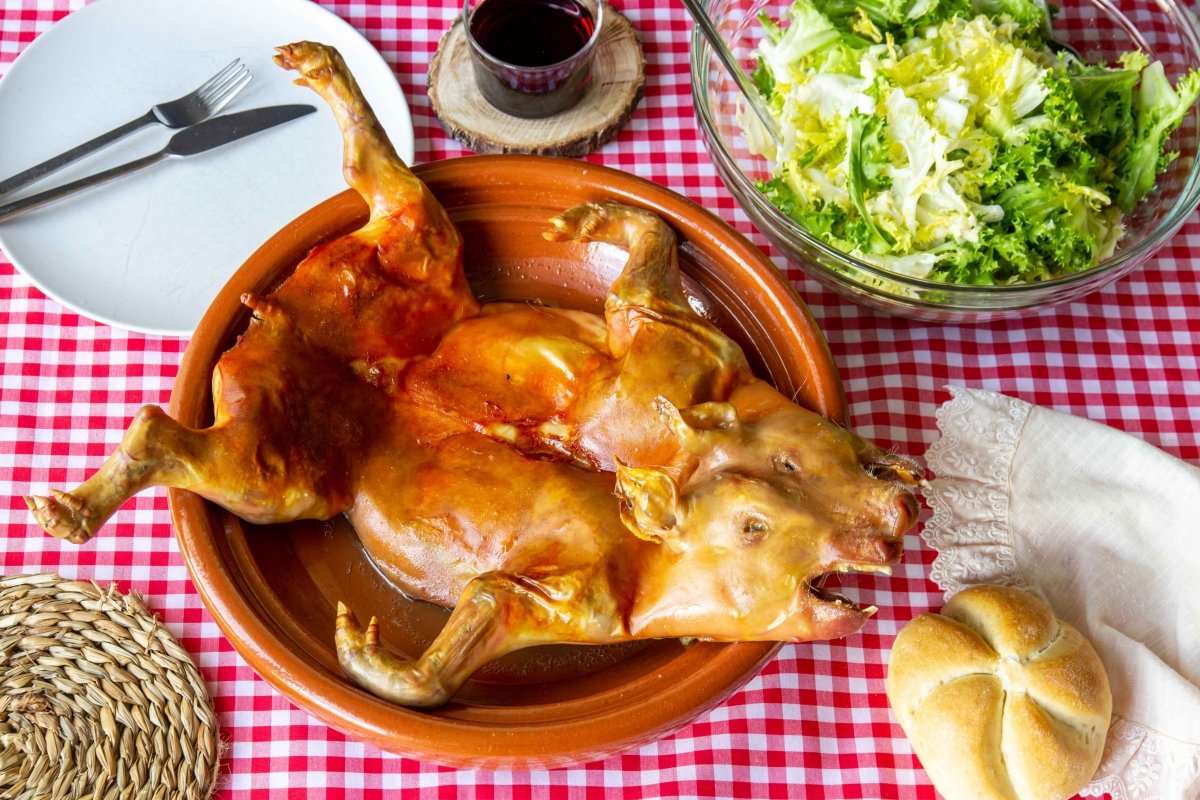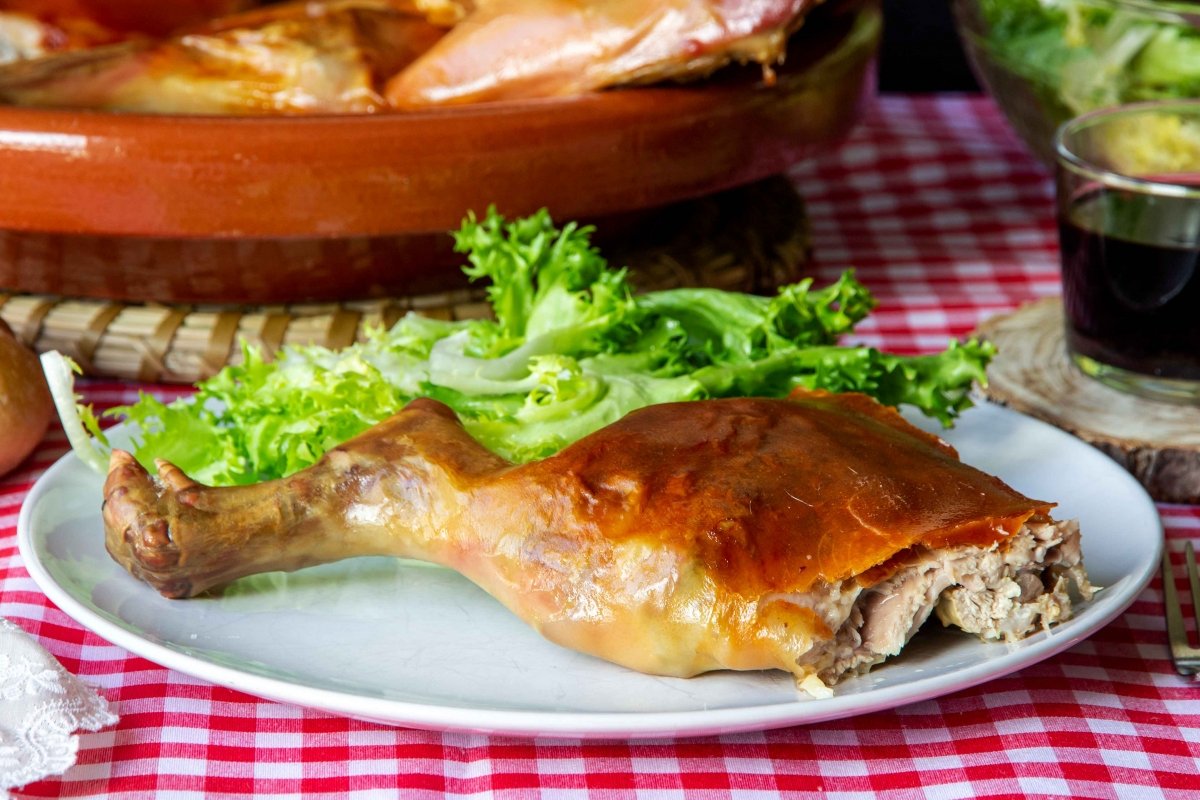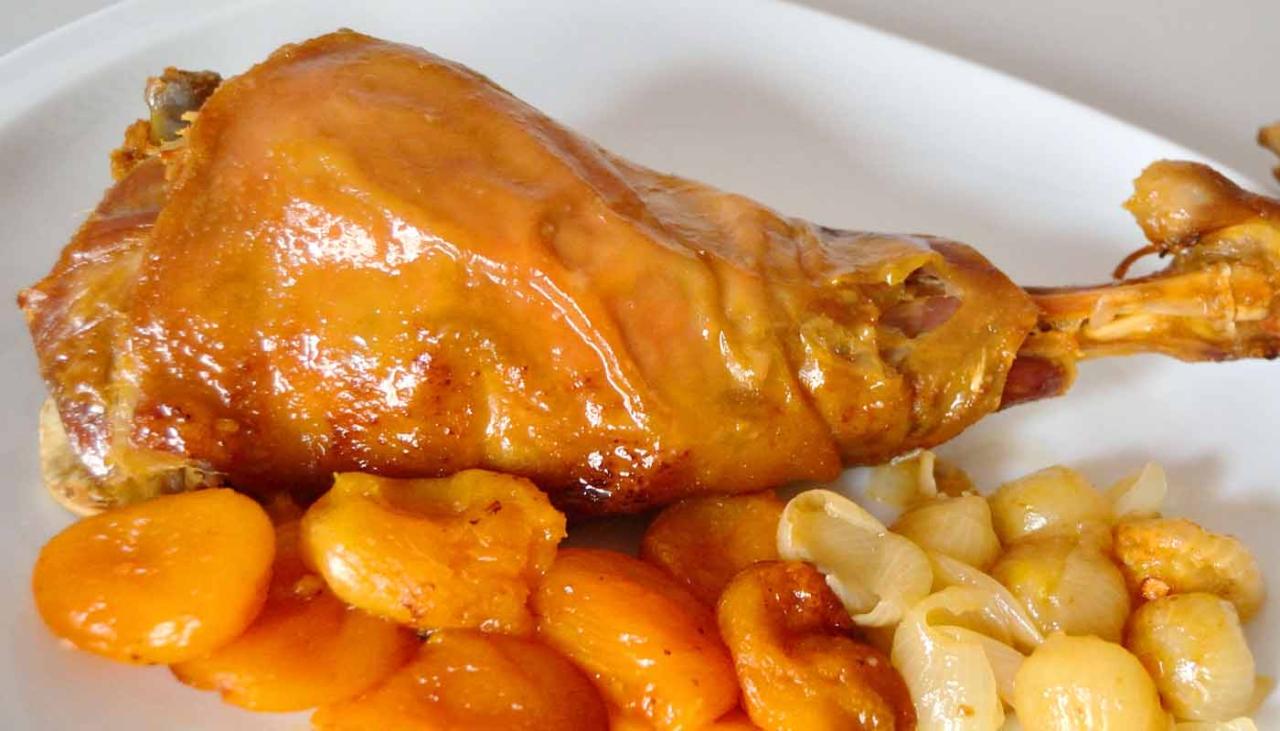During a captivating expedition through Spain’s rich culinary landscapes, I discovered the remarkable dish of Cochinillo Asado, a highlight of traditional Spanish cuisine. Venturing beyond the bustling streets into the heart of celebrated local eateries, I was introduced to this majestic feast – a roasted suckling pig that excels in both simplicity and flavor. Primary ingredients like succulent suckling pig and aromatic vegetables such as carrots meld in a spectacular dance of tastes, producing a tender, flavorful meat with a crisped exterior that is both visually and gastronomically pleasing. Engulfed by the desire to recreate this culinary delight, I delved into the art of roasting, meticulously working to encapsulate the essence and authenticity of the flavors experienced during my journey. Success crowned my efforts, and now, with great enthusiasm, I am eager to share this exquisite recipe, inviting you to embark on your own Spanish culinary adventure right from your kitchen.

Cochinillo Asado
Equipment
- 1 oven
Ingredients
- 1 medium yellow onion
- 2 cups water
- 4 ounces butter
- 2 medium carrots
- Black pepper to taste
- 1/2 cup Spanish olive oil
- Salt to taste
- 1 6- pound suckling pig
Instructions
- Collect the necessary materials.
- Preheat the oven to 425 degrees Fahrenheit.
- Season the piglet with salt and pepper on the inside and exterior to taste.
- To keep pig’s ears from scorching, wrap them with aluminum foil.
- Take the piglet from the pan when the deepest portion of the piglet’s flesh, away from bone or fat, reaches a safe temperature of 145 F.
- Pour the liquids from the casserole dish into a large small saucepan while the meat rests.
- Add the carrots and shallots that have been cooked.
- Increase the heat to high and add the water.
- To thicken the liquid, bring it to a boil.
- Serve the piglet on a big plate with heated gravy and patatas arrugadas on the side.
Cooking tips about Cochinillo Asado

- Choosing the Suckling Pig: The key to an authentic Cochinillo Asado lies in selecting the right pig. Look for a young, milk-fed suckling pig weighing between 9 to 12 pounds. This ensures tender meat and a crispy skin upon roasting.
- Preparation is Key: Properly preparing the pig before cooking is crucial. Score the skin lightly to help the fat render and the skin to crisp up. Season the interior generously with traditional spices like salt and garlic, adding fresh herbs such as rosemary or thyme for an aromatic infusion.
- Low and Slow Roasting: To achieve the signature tenderness of Cochinillo Asado, roast the pig at a low temperature (around 325°F) for a prolonged period. Depending on the size, this can take anywhere from 2½ to 3 hours. Patience is paramount – a slow roast allows the flesh to become incredibly tender while ensuring the skin crisps beautifully.
- High Heat Finish: For that quintessentially crisp skin that Cochinillo Asado is famous for, finish the roasting process with a blast of high heat (increase to 450°F) for the last 10-15 minutes. Watch closely during this step, as the goal is to achieve golden, blistered skin without burning.
- Let it Rest: Like many meats, allowing the Cochinillo Asado to rest after roasting is crucial. A resting period of 15-20 minutes before carving ensures the juices redistribute within the meat, highlighting its succulence.
- Simple Seasoning: The beauty of Cochinillo Asado lies in its simplicity. Focus on quality ingredients and let the suckling pig be the star. Minimal seasoning beyond salt, pepper, and a few herbs accentuates the natural flavors of the meat.
- Moisture Control: During the roasting process, keep a watchful eye on the moisture levels. Basting with the pan juices or a light chicken broth can prevent the pig from drying out, maintaining the delicate balance of moist flesh and crispy skin.
- Serve Appropriately: Traditionally, Cochinillo Asado is presented whole before being portioned. For a dramatic presentation, follow the Spanish custom of carving the meat with the edge of a plate to demonstrate its tenderness.
Serving suggestions about Cochinillo Asado

- Traditional Presentation: Serve Cochinillo Asado as the centerpiece of your meal. In keeping with tradition, the suckling pig is often presented whole before being carved. The dramatic presentation underscores the special nature of the dish, making it perfect for festive occasions or family gatherings.
- Accompanying Sides: Complement your Cochinillo Asado with simple, rustic sides that highlight its flavors. Roasted vegetables, such as carrots, potatoes, and onions, can be cooked in the same oven, absorbing the aromatic juices of the pig. A fresh green salad dressed in a light vinaigrette offers a crisp, clean contrast to the richness of the meat.
- Bread Pairing: Offer ample amounts of crusty bread to your guests. The bread is ideal for sopping up the flavorful juices and makes sure none of the deliciousness goes to waste.
- Wine Pairing: A robust Spanish red wine, such as a Ribera del Duero or a Tempranillo, pairs beautifully with Cochinillo Asado. The full-bodied nature of these wines stands up well to the rich, savory flavors of the roast suckling pig.
- Portion Instructions: When it comes to serving, the Cochinillo Asado is traditionally portioned using the edge of a plate rather than a knife, showcasing the tenderness of the meat. This practice not only adds to the theatrical aspect of the meal but also demonstrates the superb quality and preparation of the dish.
- Simple Seasoning: Since the suckling pig is the star of the show, it’s essential to keep seasonings minimal. Allow your guests to appreciate the natural flavors of the meat, with perhaps just a sprinkle of sea salt or a squeeze of fresh lemon to enhance its taste.
- Dessert Pairing: Conclude your meal with a traditional Spanish dessert, such as flan, churros, or tarta de Santiago (almond cake), to continue the cultural culinary journey.
Top 5 FAQs about Cochinillo Asado

- What is Cochinillo Asado? Cochinillo Asado is a celebrated dish within traditional Spanish cuisine, known for its tender, succulent meat and crisp, golden skin. The dish is centered around a young, milk-fed suckling pig roasted to perfection, embodying the rustic charm and culinary richness of Spain. It is a dish that highlights the delicate flavors of the pig, enhanced with aromatic vegetables like carrots.
- What are the key ingredients in Cochinillo Asado? The main ingredients that define Cochinillo Asado include a young, milk-fed suckling pig and aromatic vegetables such as carrots for roasting alongside the pig. Seasonings typically remain simple, focusing on salt, garlic, and sometimes fresh herbs like rosemary or thyme to complement the natural flavors of the meat.
- How do you prepare and roast the Cochinillo Asado to achieve its signature tenderness and crispy skin? Preparation begins with scoring the pig’s skin lightly and seasoning the interior generously with traditional spices. The roasting process follows a low and slow method at around 325°F to gradually render the fat and ensure tenderness, typically taking between 2½ to 3 hours depending on the size. A high heat finish at 450°F for the last 10-15 minutes crisps up the skin to a desirable golden texture. Resting the meat for 15-20 minutes before carving is crucial for maintaining its succulence.
- What makes Cochinillo Asado unique in Spanish gastronomy? Cochinillo Asado stands out in Spanish gastronomy due to its deep roots in tradition, representing a connection to Spain’s history, culture, and communal dining practices. The method of preparation and the ceremonial presentation of the pig whole before carving emphasize the dish’s significance in celebrating Spanish culinary practices.
- Are there any specific serving suggestions for Cochinillo Asado? Serving Cochinillo Asado traditionally involves presenting the roast whole as the centerpiece of a meal, often followed by carving it using the edge of a plate to demonstrate its tender meat. It is typically accompanied by simple, rustic sides like roasted vegetables and a fresh green salad, with suggested wine pairings such as a robust Spanish red wine to complement the rich flavors of the pork.

Leave a Reply